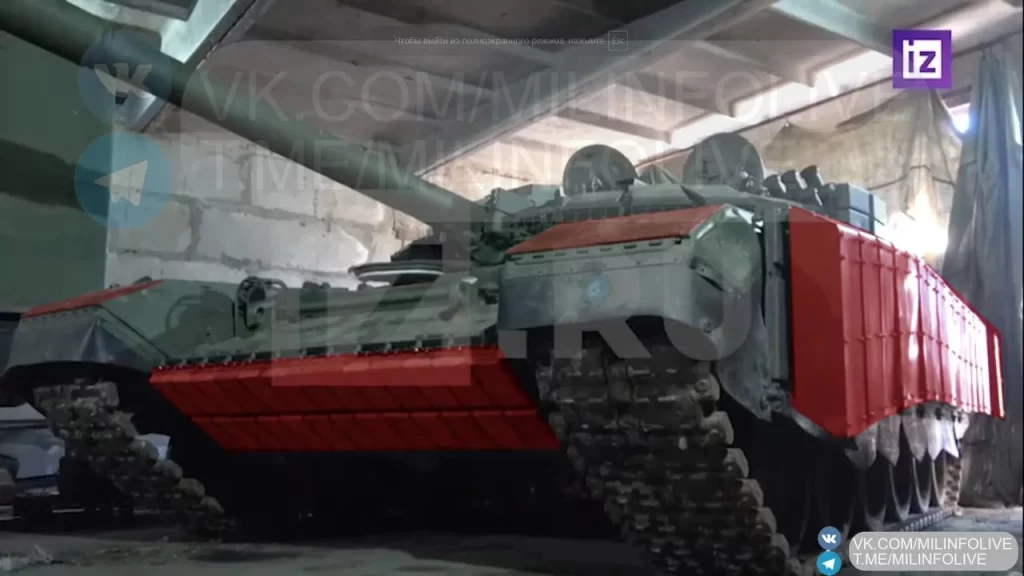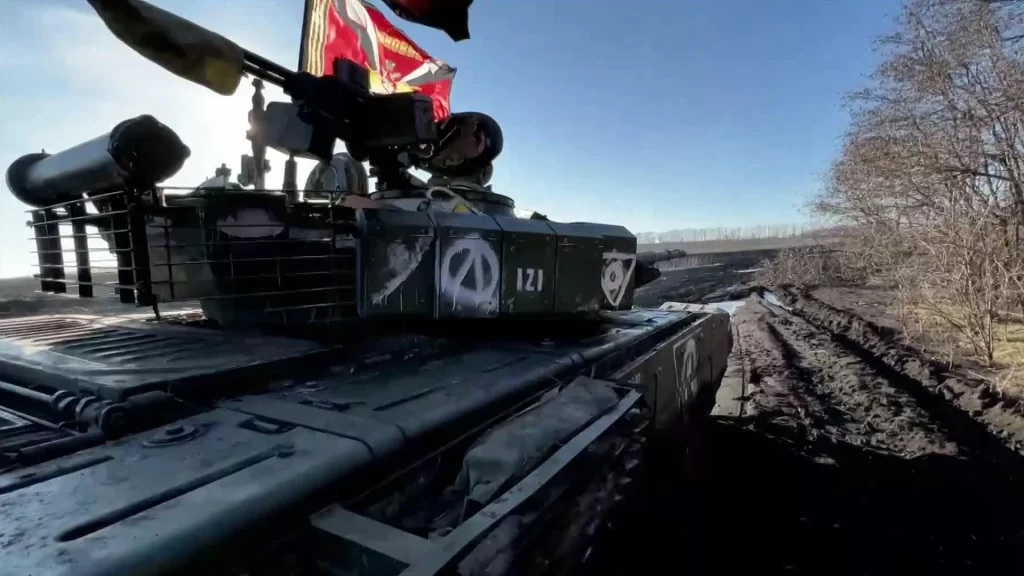In recent months, images of updated T-72B3 tanks being loaded onto railroad platforms have circulated on Telegram channels, which look different from the 2011 version of this vehicle.
Despite crushing sanctions imposed by the West, Russia maintains a steady production of the modernised T-72B3 and T-90M, which is helpful given that the North Atlantic Treaty Organization (NATO) has no plans to reduce the number of weaponry deliveries to Ukraine. The Russians had already predicted that NATO would provide tanks for three to four Ukrainian armoured brigades. Russia needs qualitative superiority, as it already possesses quantitative dominance.
Why is T-72 dangerous after getting hit?
Before discussing the more recent version of the upgrades, it is essential to comprehend what happens when a T-72B is hit. T-72B is a compact combat compartment. The commander is crammed between the gun, the commander’s complex, the rear of the seat, and the instrument and shell-laden starboard side. The gunner is slightly more spacious. The driver appears to be doing well, but he has another problem: the gun covers his hatch, and if the gun is above the hatch when the tank is destroyed, he will be unable to escape. But he must evacuate immediately. In the T-72B, unlike the T-80, the driver can climb inside the fighting compartment and depart through one of the tower hatches; however, the driver cannot rely on this in the event of a fire or a hit due to the tank’s compactness.
Most of its compactness is attributable to fuel tanks located in the fighting compartment next to the crew and 45 artillery rounds and rockets with separate cap loading. There are 22 in a single site. The remaining 23 are practically distributed throughout the whole circumference of the hull and turret. A number of them are positioned in the racks for the fuel tanks. In short, they are fuel-filled tanks with ammunition and explosives slots. This non-automated component of the ammo rack is often damaged upon armour breach. The most combustible part of this explosive mixture is the cap charge. These charges have little local protection beyond the thin walls of rack tanks and a coating of flammable fuel, and they may be ignited with a simple lighter in a matter of seconds. If the tank’s armour is compromised, it is not difficult to imagine the crew’s torment. And it will be pretty challenging to escape. Vast amounts of energy and heat are created when the charges ignite. If the tower’s hatches are sealed, then the tower is torn off. It often happens without warning, leaving the crew with no chance of life. It combusts, evaporates, and decomposes. It happens to most Western and older Soviet tanks, but more often in a T-72. This condition has the greatest psychological impact on the crew, causing them to quit a tank that is still relatively combat-ready.
The Protection
In the past two months, Russia’s media, particularly Vesti, have reported from the Uralvagonzavod workshops where T-72B3 tanks are being converted to the new standard. It was reported that the T-72B / B1 Tanks, which formed the bulk of the “seventy-two” family’s armoured serial production, were being modified to the newest standard.
The images which are available in the open source show that these tanks have received the regular “Kontakt-5” Explosive Reactive Armour (ERA) and not the coveted dynamic protection “Relikt”. Kontakt-5 is a variety of Soviet-era ERA from the second generation, whereas Relikt, the Russian ERA of the third generation, is said to be twice as effective as Kontakt-5.
In some special operations sectors, the new enhancements appear sufficient for combat. The side and roof of the tanks are less protected. In contrast to the current third-generation reactive armour installed on the T-80BVM, a derivative of the seventy-two family, the specs of the newest T-72 standard are perplexing. Relikt has been tested on the T-72B2 “Slingshot,” and it could be installed if necessary.

However, the Tank tower has visible modifications of dynamic protection. It features anti-cumulative netting (to protect against Cumulative or HEAT warheads) similar to the T-90M, and one image depicts a small ERA block in the machine gun mount’s embrasure. However, the mantlet area, one of the tank’s weakest frontal locations, does not appear to be very secure against cumulative weaponry, but the decision-makers may be depending on the steel mass to protect the area. Additionally, Kontakt-5 is visible to the right and left of the gun, parallel to its axis and the tower’s roof. Considering the superior strike power of anti-tank missiles, Relikt might have been a superior option, but it is irrelevant in tank battles. It is interesting to note that the Ukrainian videos and reports of the success of anti-tank missiles have vanished for a considerable time.
In a tank-on-tank engagement, the sides of the tank are only significant if caught off guard. Since the Soviet era, planners in this zone have been uncertain about anti-accumulative protection. In tank combat, the sides of the tanks can only be targeted momentarily if the tank is manoeuvring. It is, however, exposed to anti-tank missiles or RPG fire.
On the T-90M, dynamic protection for these weakened zones was introduced in serial production. It has since made its way onto the new T-72B3, thanks to the Research Institute of Steel and Uralvagonzavod. When the Ukraine war began, these regions were covered by lattice screens (coop cages – pun intended), as you recall. It must be understood that the primary objective of the gratings is protection against anti-tank grenades of the PG-7 type, which can be neutralised without detonation by these gratings with a probability of approximately 50%. In all other circumstances, it did not offer security.

Replacing lattice screens with dynamic protection is the right decision. In terms of heading manoeuvring angles, this is far more advantageous. According to estimates, these contraptions are meant to oppose HEAT munitions when shot into the side at a right (or near-right) angle and can provide the equivalent of 600-700 mm from HEAT jets.
The tower’s summit is encased with dynamic protection. They cover not only the tower’s sides but also its rear. This is primarily designed to avoid exposing vulnerable regions to the opponent.
The side of the T-72B3 turret at the location of the Tucha aerosol grenade launchers has also received reinforcement. It has kept the width of the tower the same.
Other improvements
The improvements made to new batches of the T-72B3 are not restricted solely to improvements in dynamic protection. For instance, according to what can be seen from the outside, there is a mechanism for the automatic opening of the armoured shutter of the Sosna-U sight. Previously, the shutter was only secured with bolts and had to be opened by hand. In addition, the tower now sports what appear to be the heads of various devices or antennae, the functions of which remain a mystery.
How do they compare to Western tanks?
Ukraine will receive a modern tank if the newly constructed M1A2 Abrams come. Already superior to these older western tank models, the Russian T-72B3 is also superior to some relatively recent tanks that could arrive in Ukraine. The more recent improvements to the T-72B3 may not be as protected as the UK’s 14 obsolete Challenger-2 tanks, but a battle between them will be evenly matched.
The notion of Western and Russian tank superiority will be exposed throughout these engagements.
